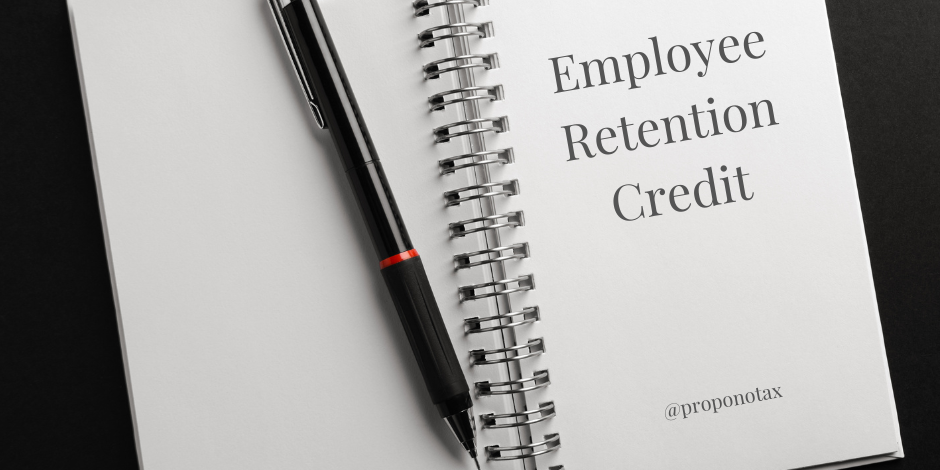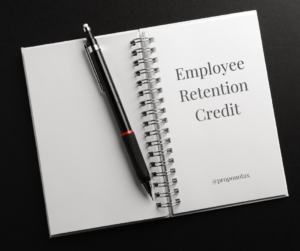Your Guide to the IRS’s ERC Voluntary Disclosure Program


The IRS has launched a groundbreaking initiative aimed at helping businesses correct and repay questionable Employee Retention Credit (ERC) claims. In this blog post, we delve into the details of the ERC Voluntary Disclosure Program—a unique opportunity for businesses to rectify their claims and avoid penalties. Act swiftly, as the program is open only until March 22, 2024.
Understanding the Background
The IRS initiated this program as part of its ongoing efforts to combat aggressive marketing practices surrounding the ERC. Some businesses were misled into making erroneous claims, and the IRS is keen on setting things right. This voluntary disclosure program is designed to provide relief to eligible businesses while ensuring tax compliance.
Previous Initiatives
Earlier this year, the IRS began mailing letters to thousands of taxpayers, notifying them that their ERC claims had been disallowed. These letters were sent to businesses that did not meet the basic eligibility criteria. To further assist businesses, a withdrawal option was introduced in October, allowing certain employers to withdraw their ERC claims, avoiding future repayment, interest, and penalties. This option has already seen millions in ERC claims being withdrawn.
In September, the IRS implemented a moratorium on processing new ERC claims, set to last until early 2024. No new claims will be reviewed or processed during this period.
Key Details of the Disclosure Program
Interested businesses must apply for the ERC Voluntary Disclosure Program by March 22, 2024. If accepted, they will need to repay only 80% of the credit they received. The IRS will not charge interest or penalties on these repayments. Any interest paid on the ERC refund claim does not need to be repaid.
For businesses unable to repay the credit in full, there may be an option for an installment agreement on a case-by-case basis. However, entering into such an agreement without repaying the required 80% upfront will result in penalties and interest.
The IRS chose the 80% repayment figure to accommodate businesses that were lured into making questionable claims by unscrupulous preparers who often took fees of at least 20%, leaving businesses without the full credit.
Disclosure Requirements
As part of the application process, businesses must provide the IRS with information about advisors or tax preparers who advised or assisted with their ERC claims. This information will be used to identify patterns of abuse and ensure promoters are held accountable.
Eligibility
Businesses that have already received the ERC but aren’t entitled to it can apply for the program if they meet certain criteria:
- Not under criminal investigation
- Not under an IRS employment tax examination
- Not received an IRS notice and demand for repayment of the ERC
- The IRS has not received noncompliance information from a third party
How to Apply
To apply, businesses must complete Form 15434, “Application for Employee Retention Credit Voluntary Disclosure Program,” available on IRS.gov. The form must be submitted using the IRS Document Upload Tool. Employers who outsource payroll must have the third party file Form 15434.
Next Steps
Once accepted into the program, an IRS employee will review the application and answer any questions. If approved, businesses will receive a closing agreement and will need to repay 80% of the ERC received using the Electronic Federal Tax Payment System (EFTPS). For those unable to pay in full, an installment agreement may be an option, but it comes with penalties and interest.
Ongoing Efforts
The ERC Voluntary Disclosure Program is just one step in the IRS’s ongoing efforts to combat ERC fraud. The IRS is intensifying audits and investigations into dubious claims and urging businesses to review ERC requirements and consult with tax professionals to ensure compliance.
Conclusion
The ERC Voluntary Disclosure Program offers a valuable opportunity for businesses to correct their claims, avoid penalties, and promote tax compliance. Take action before March 22, 2024, to benefit from this initiative and protect your financial interests.
Stay tuned for more updates on tax regulations and compliance. www.proponotaxresolution.com

